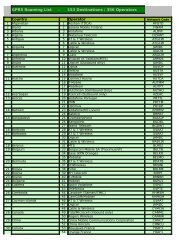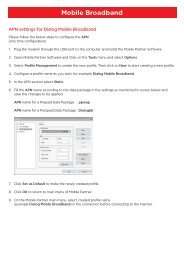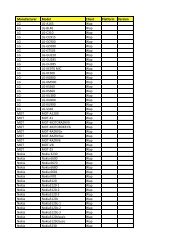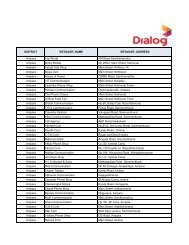Annual Report 2012 - Dialog
Annual Report 2012 - Dialog
Annual Report 2012 - Dialog
You also want an ePaper? Increase the reach of your titles
YUMPU automatically turns print PDFs into web optimized ePapers that Google loves.
74 l <strong>Dialog</strong> Axiata PLC l <strong>Annual</strong> <strong>Report</strong> <strong>2012</strong><br />
Notes to the Financial Statements<br />
3 Financial risk management contd.<br />
3.1 Foreign exchange risk<br />
The Company and the Group operate internationally and are exposed to foreign exchange risk arising from various currency<br />
exposures, primarily with respect to the US Dollar. Foreign exchange risk arises when future commercial transactions or<br />
recognised assets or liabilities are denominated in a currency that is not the entity’s functional currency.<br />
As at 31 December <strong>2012</strong>, if LKR has weakened by 1% against USD with all other variables held constant, this will result in<br />
net foreign exchange losses of Rs 176 million in the Group, on translation of USD balances.<br />
3.2 Cash flow and fair value interest rate risk<br />
The Company and the Group has cash and bank balances including deposits placed with creditworthy licensed banks and<br />
financial institutions. The Company and the Group manage its interest rate risk by actively monitoring the yield curve trend<br />
and interest rate movement for the various cash and bank balances.<br />
The Company’s and the Group’s borrowings comprise borrowings from financial and non-financial institutions and<br />
Preference Shares. The Company’s and the Group’s interest rate risk objective is to manage an acceptable level of rate<br />
fluctuation on the interest expense. In order to achieve this objective, the Company and the Group target a composition of<br />
fixed and floating borrowings based on assessment of its existing exposure and desirable interest rate profile. The Company<br />
and the Group analyses its interest rate exposure on a dynamic basis.<br />
3.3 Credit risk<br />
Credit risk is managed on Company and the Group basis. Credit risk arises from cash and cash equivalents, derivative<br />
financial instruments and deposits with banks and financial institutions, as well as credit exposures to customers, including<br />
outstanding receivables (net of deposits held). Individual risk limits are set, based on internal or external ratings. The utilisation<br />
of credit limits is regularly monitored.<br />
The Company and the Group place its cash and cash equivalents with a number of creditworthy financial institutions.<br />
The Company’s and the Group’s policy limits the concentration of financial exposure to any single financial institution.<br />
The maximum credit risk exposure of the financial assets of the Company and the Group are approximately their carrying<br />
amounts as at statement of financial position date.<br />
3.4 Liquidity risk<br />
Prudent liquidity risk management implies maintaining sufficient liquid funds to meet its financial obligations.<br />
In the management of liquidity risk, the Company and the Group monitor and maintain a level of cash and cash equivalents<br />
deemed adequate by the management to finance the Company’s and the Group’s operations and to mitigate the effects<br />
of fluctuations in cash flows. Due to the dynamic nature of the underlying business, the Company and the Group aim at<br />
maintaining flexibility in funding by keeping both committed and uncommitted credit lines available.<br />
The table below analyses the Group’s and the Company’s non-derivative financial liabilities into relevant maturity groupings<br />
based on the remaining period at the statement of financial position date to the contractual maturity date.



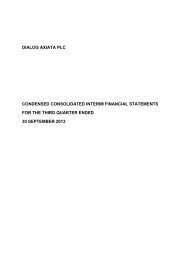
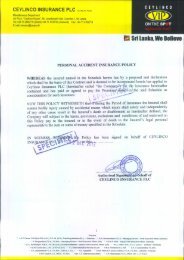
![nrypq;Nfh ,d;#ud;;]; nfhk;gdp ypkplw - Dialog](https://img.yumpu.com/15429071/1/190x245/nrypqnfh-dud-nfhkgdp-ypkplw-dialog.jpg?quality=85)
